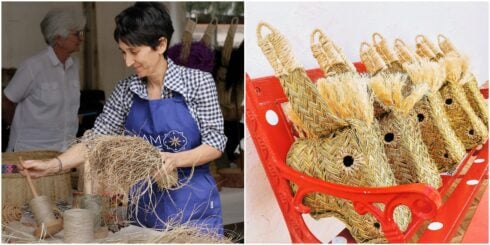By Peter Langdale
Below are some useful tips on how to get the best out of your gardens and vegetable plots this month.
Irrigation:
The secret to good watering is to keep the amount and frequency regular.
Good regular watering should stop your plants becoming stressed and lead to good growth, flowering and, where appropriate, fruiting.
Try to avoid watering in the heat of the day as the water droplets can act like a magnifying glass and cause some damage to sensitive plants. It also wastes water through evaporation.
Also by watering during the cooler hours there is less immediate evaporation and more efficient water usage.
Pruning and dead heading:
With the higher temperatures the spring flowering shrubs are beginning to look the worse for wear and so now is a good time to cut out the older flowering stems and branches.
Cut back to a new shoot or in the case of roses go back to one or two buds at the base.
Take a walk among your fruit trees and bushes and you will almost certainly see suckers coming up from the rootstock.
These are an unnecessary drain on the plants reserves and should be removed.
Now is the time that our fruit plants are building reserves for later flowering and fruiting and when they most need regular feeding.
Applications of nitrogen, phosphate, and potash are essential, but must be supplemented with amounts of minor nutrients such as magnesium, iron and calcium etc.
Lawn care:
We can expect rapid grass growth with frequent cutting and so monthly amounts of a lawn fertilizer are recommended to help maintain the colour.
Cutting too short in very hot conditions may cause some scorching.
Pot plants:
Daily watering is a must and in extreme conditions morning and evening.
Hanging baskets are difficult to maintain moist and need special attention.
Once again regular feeding is required.
Fruit and veg plot:
From now until the middle of July there is still time to put in some summer crops such as fennel, cabbage, radish, mouli and potatoes for the autumn.
By now, good use should have been made of spring sown vegetables with some longer cycle crops such as carrots still being picked.
Keep on top of the weeding as summer weeds such as purslane and fat hen can be very invasive. Regular watering can be coupled with regular feeding and we recommend a feed high in potash for good fruit and leaf development.
If you have an abundance of herbs such as parsley, coriander, dill, thyme, do not waste them.
Now is a good time to harvest them and air dry them for future use.
Most can also be put in the freezer.
Thinking about going away on holiday?
If so leave your fruit and veg plots as clean as possible and dispose of any over mature fruit.
If you don’t, be aware you may come back to a plot that looks as if it has been abandoned for a year, not just three weeks!








Peter,
firstly you make no distinction between those who live on the coast in a ‘Med climate’ and those who live away from the coast in a ‘Continetal climate’.
Many of the plants you mention can only be grown under plastic away from the coast.
I’m also really surprised you hav’nt mentioned drip watering controlled by automatic timers – perhaps the biggest boon for decades.
A partially disabled friend of mine that lives in Murcia improved on the above system by having the piping installed about 5 inches below the soil – a brilliant idea which means he uses less than a third of the water – would’nt it be good for water conservation if the Spanish could get their heads around such a simple concept.
Whilst out walking one day along the dry riverbed from Guadix to Alcudia, my partner Angela happened to notice what she thought was watercress and indeed she was correct and bloody good it was as well.
What made this discovery even more amazing was that it was growing in the winter. Here behind Alcudia and the Autovia there was a steady stream of water running off from the hills. A lot of ice was formed because of the freezing temperatures but this strain of watercress just loved it.
As the water dried up and the temperature rose at the beginning of April it all began to disappear.
So anyone making a trip to Guadix just follow the dry riverbed heading for Alcudia and you will find this first class watercress growing in abundance between December to mid April – enjoy because the Spanish cannot be bothered.
Has anyone else found wild watercress in Andalucia?
I have tried to grow this particular watercress in France and gave some seed to a friend in the UK – we have both failed!
Hi Pete,
Trying to get an email contact address for you. We can’t make it out on the Christmas card. Can you let us have it in typed form. We have tried several variations but it keeps coming back. Sorry to use the work contact.
Hilary and Martin
Ps Good article!